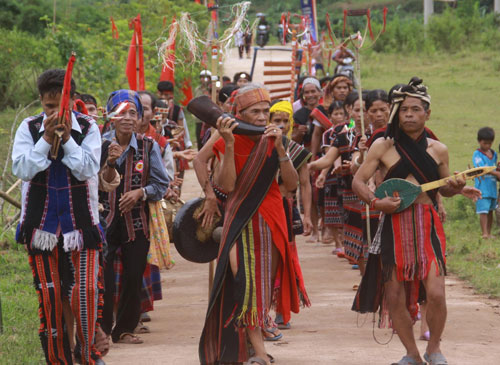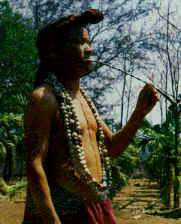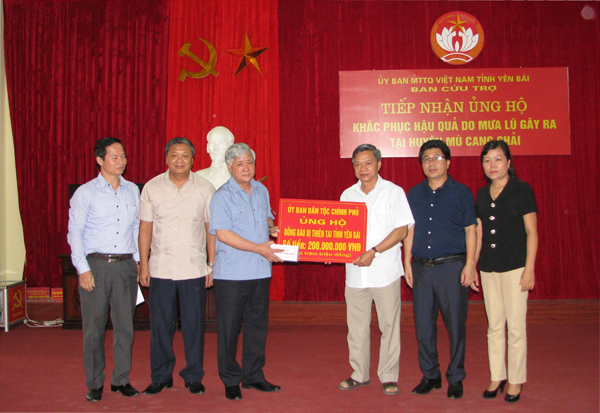The Ta oi have a population of over 26,000 inhabitants. The Ta oi are also called Toi oi, Pa Co, Ba Hy and Ba Ghy. They concentrate in A Luoi district ofThua Thien-Hue province and Huong Hoa district of Qua ng Tri province. Ta oi language belongs to the Mon-Khmer Group and is close to the Bru-Van Kieu and Co-tu languages.
In the past, the Ta oi practise slash-and-burn cultivation. For some time now the growing of wet rice has been rapidly developed. They are'good at horticulture and fish rearing in dug ponds.
Ta oi women wear shirt and skid, even skiff knotted up to cover their chests. Men wear loincloths and short vest or leave their upper torsos naked. Ornaments made from copper, silver, glass beads and ivory are also popular. Customs offiling teeth, stretching earlobes, tattooing the bodies and wearing hair in shape of a card above the forehead are nolonger observed.
In the Ta oi village, the communal house called mng is built in the centre of the village while in some certain places, there exist "spirit houses" built on outskirts of the habitation which are the place to focus the villagers whenever festivals and public activity occur.
The ordinary house is fairly elongated. The interior is divided into rooms by partitions. Each room reserves for each small nuclear family. A space floor reserves for receiving guests and meetings of the family reunion. These elongated houses have gradually disappeared.
Each Ta oi lineage has its own name and certain taboos. Legends are written down to explain such name and taboos. The children take the family name of the father. Only the sons have the right to inhert family estate. The head ofthe lineage plays an important role even in village affairs.
Ta oi young men and women are free to choose their partners in a traditional way of expressing love called "sim". They arrange to meet each other in the fields and exchange "belief objects" with each other, then the family of the young man relies on a matchmaker's assistance in proposing marriage from the family of the young woman. After the wedding, the bride becomes a member of her husband's family. Marriage between decendents of paternal aunt and maternal uncle is encouraged, but if a man of A lineage marries a woman of B lineage, thus marriage between man of B lineage and women of A lineage is prohibted. He must choose his wTe of other lineages.
The Ta oi believe in animism and organize many ceremonies to venerate Giang (genies) for protection of human beings, crops and animals.
According to custom, several years after burial, the dead's lineage organize a ceremony to reinter the dead remains and build funeral house with sophisticated decoration and statues around the house's fence.
The Ta oi preserve many proverbs, folksongs, puzzles and stories retracing their origin and the struggles between the rich and the poor, the good and the devil and the faithful love between tween men and women. Folksongs comprise Ka-lot, Ba -boih, ro-in and especially romantic cha chap. Gongs, string zthers, flutes, tru.





